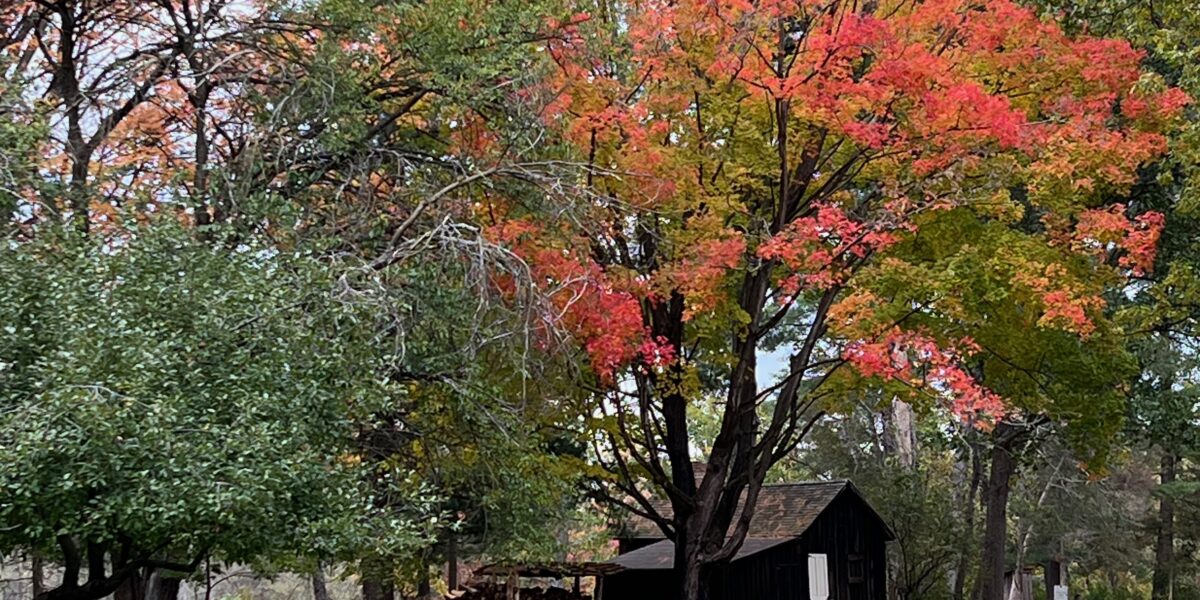Last week, Carol and I had the privilege of attending a dinner recognizing Paul Williams (originator of Wisconsin Fast Plants) for Distinguished Service at the University of Wisconsin. We decided to mosey our way up and to soak up some of the northern deciduous forest autumn.
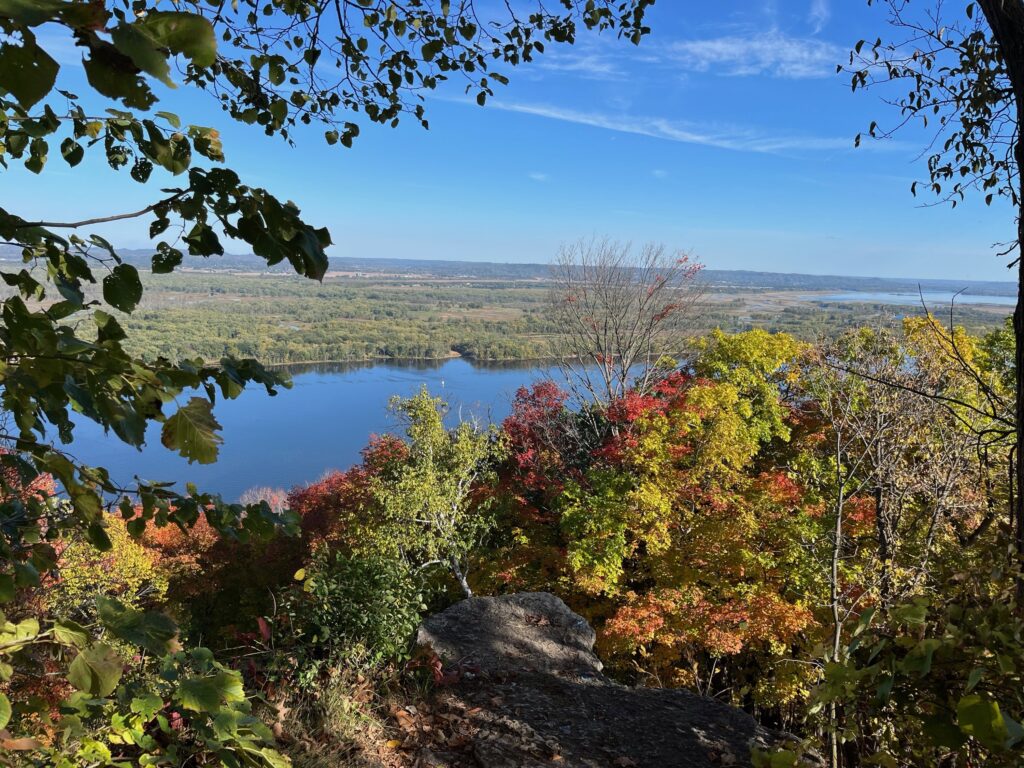
One of our stops was the Aldo Leopold Foundation and Leopold’s Shack near Baraboo, WI. The Shack is something of a pilgrimage for us. It was great to find out that they have greatly expanded their displays, trails, and self-guided tours since I had last been there.
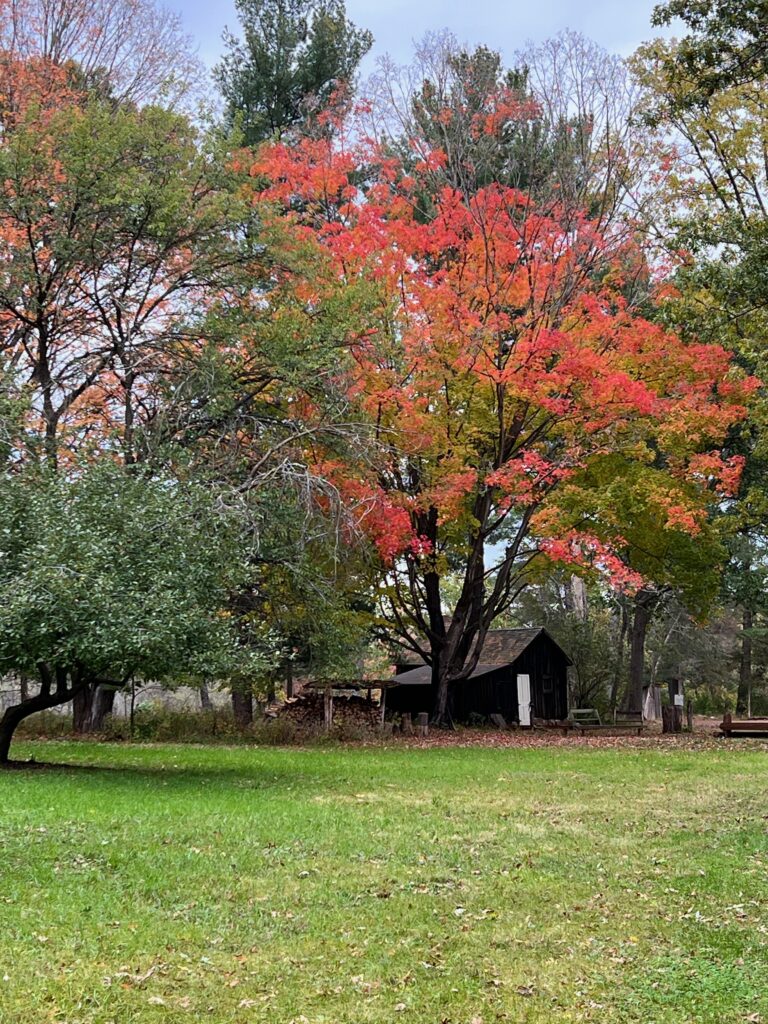
While on the self-guided tour around the “Shack” property, we came across a recently cleared opening in mature oak woods that created a small field of mostly bare sand. I was thrilled to find out from the interpretive sign that this was an attempt to re-establish a sand blow that had been part of the property. And I was even more thrilled to find that it was in this sand blow that Carl Leopold first found Draba and shared it with his dad as part of a botany class assignment. That discovery eventually led to one of my favorite essays from A Sand County Almanac–Draba.
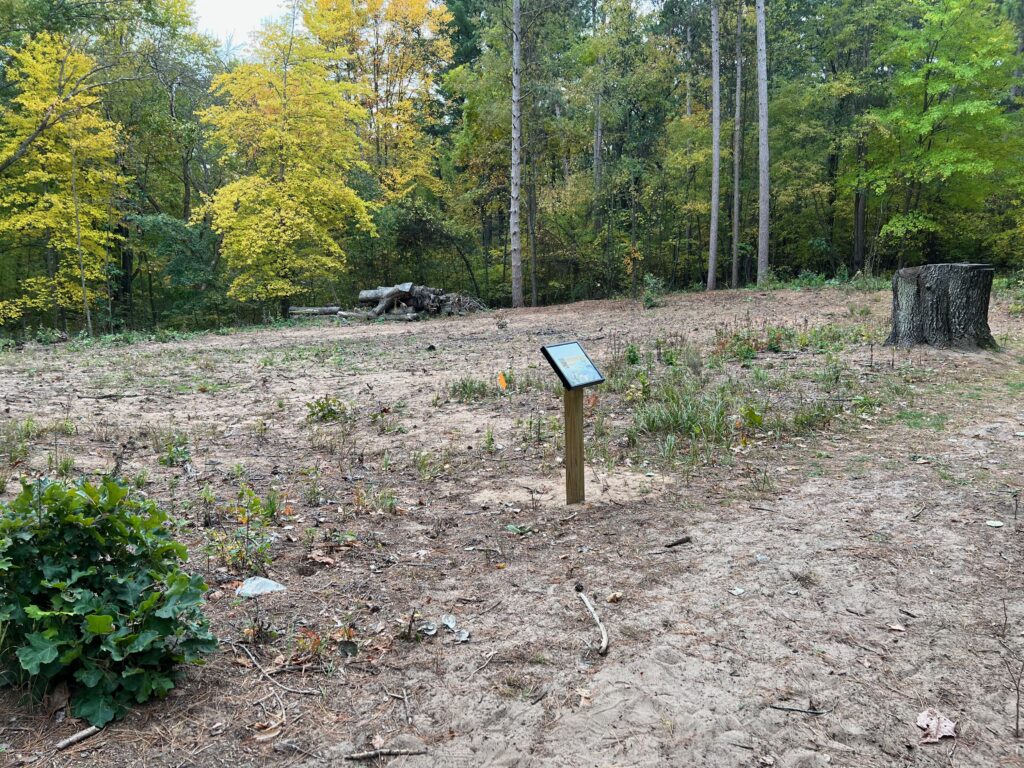
I wrote about my own quest to know this plant in KS, here: https://www.bradwilliamson.net/a-life-long-quest/
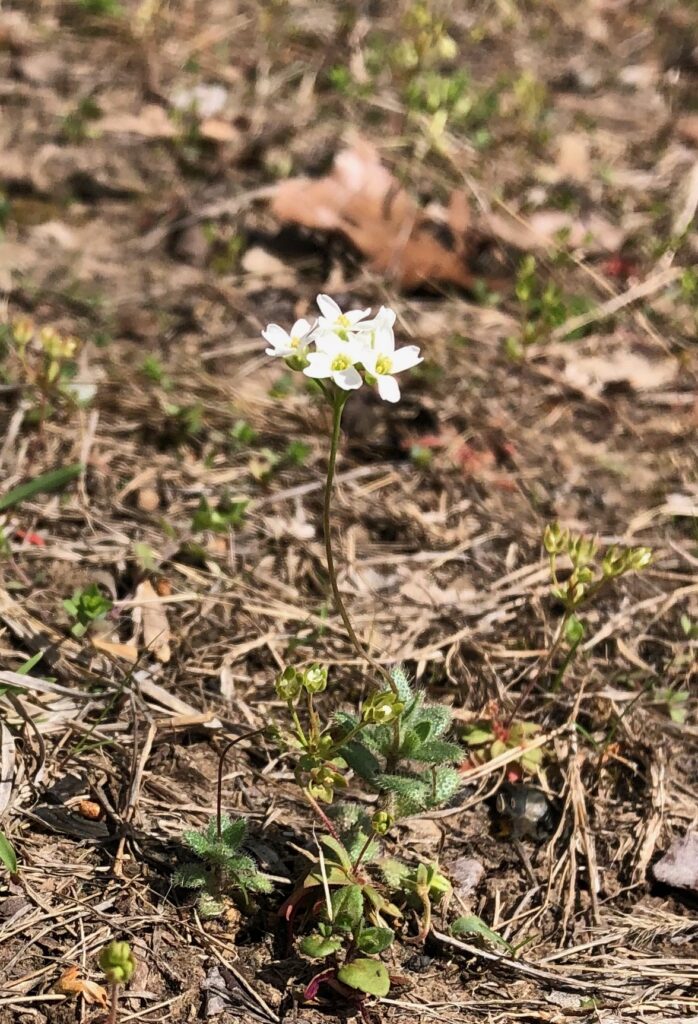
When we returned to Lawrence, I looked up information about this sand blow restoration and discovered that in addition to the sand blow, folks at the foundation also collected seeds of Draba from the nearby Wisconsin riverbanks to reintroduce at the site. I looked over my photos of the sand blow and sure enough, there is a marker flag right in front of the interpretive sign where I am pretty sure they scattered the seed. Here is a blog post describing the project: https://www.aldoleopold.org/post/draba-returns-to-the-sand-blow/ by Leah Bieniak, a program associate for the Foundation.
